A loss of a library in some cases equals to culturcide.
History speaks of many examples when these sacred places of knowledge and wisdom have been deliberately or accidentally destroyed.
In some cases, it was due to hazardous natural disasters such as earthquakes, floods or fires, while in other, it were human actions or conquests.
1.The Royal Library of Antioch
Today, the ruins of the ancient Greco-Roman city of Antioch rest near the modern Turkish city of Antakya.
Back in time, the city was famous and notable for The Royal Library of Antioch, commissioned around 221 BC by Antiochus the Great of the Seleucid Empire.
The ancient Greek poet Euphorion of Chalcis had accepted the challenge of the king and established the royal library at Antioch; the poet also served as the principal librarian until his death. At one point, Antioch was considered to be the cultural capital of the ancient world, respected even more than Pergamon of Ancient Greece.
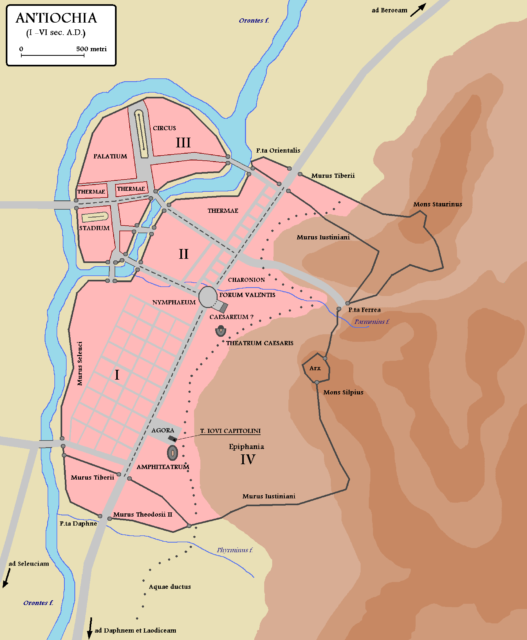
The Royal Library of Antioch was unfortunately destroyed in 363 AD by Christian Emperor Jovian. Allegedly, the Emperor was convinced that the library was densely stocked with “unholy” literature by the hand of his non-Christian predecessor, Emperor Julian the Apostate.
Emperor Jovian wanted to gain respect among the local people of Antioch, and he thought he would attain that by burning down the “pagan books.” On the contrary, he completely failed as the citizens angrily watched the collections burning in the fire. It would be later noted that “not only pagans but also the Christians interpreted this as a barbaric act.”
2.Nalanda, India
Back in the day, Nalanda was an acclaimed Mahavihara, a large Buddhist monastery in the ancient kingdom of Magadha. Today, ruins of the site can be seen some 95 kilometers southeast of Patna near the town of Bihar Sharif in India. As a prominent learning center, this place cultivated knowledge from the seventh century BC to c. 1200 AD. At that time, Nalanda counted as one of the most renowned repositories of Buddhist knowledge in the world.
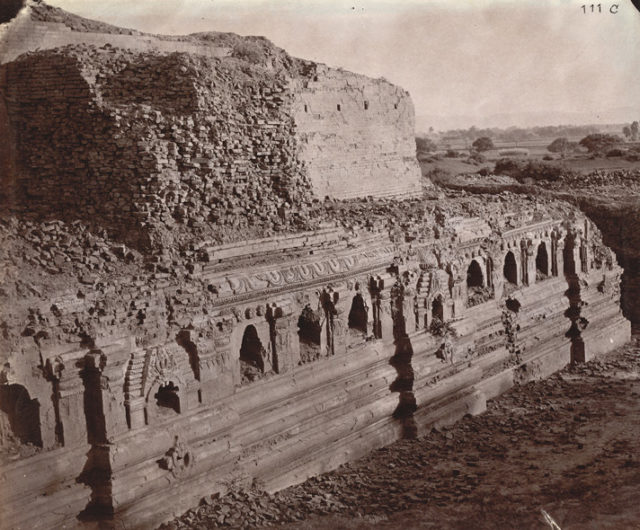
The complex featured a well-equipped library which, according to traditional Tibetan sources, comprised of three large multi-storeyed buildings: the Ratnasagara (Ocean of Jewels), the Ratnodadhi (Sea of Jewels), and the Ratnaranjaka (Jewel-adorned). The greatest among them was The Ratnodadhi, a nine-story building which housed the most sacred of manuscripts.
The correct number of volumes in the Nalanda library is not known, but estimates about hundreds of thousands. Aside to religious manuscripts, the library also had books on various subjects such as grammar, logic, astrology, astronomy, medicine, and literature. The Nalanda library must have had a classification system, probably developed by the Sanskrit linguist Panini. Buddhist texts were most likely divided into three classes based on the Tripitaka’s three main divisions: the Vinaya, Sutra, and the Abhidhamma.
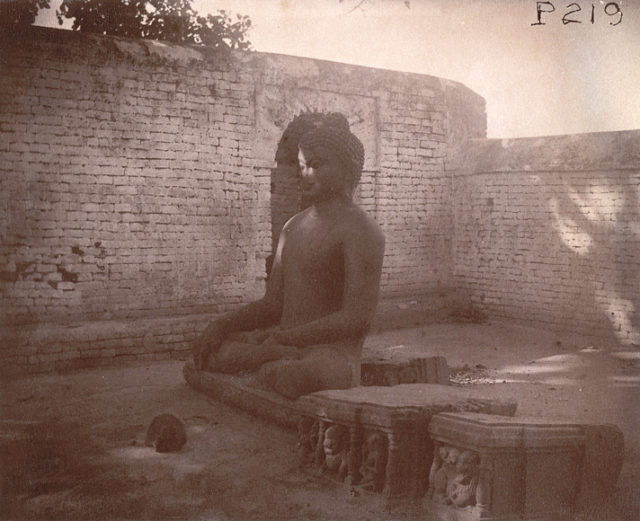
Reportedly, the whole complex was destroyed by a Turkic military general of Qutub al-Din Aybak, the founder of the Turkic dominion in the northwest of India. The remnants of Nalanda are today protected as UNESCO World Heritage Site.
3. The Library of Celsus in Ephesus
The Library of Celsus was considered as one of the most impressive buildings in the Roman Empire, and it had a capacity to store 12,000 scrolls. It was built in honor of the Roman Senator Tiberius Julius Celsus Polemaeanus. It was finished somewhere between 114 and 117 by Celsus’ son, Gaius Julius Aquila.
The Library of Celsus counted as the third largest library in the ancient world, behind the libraries of Alexandria and Pergamum.
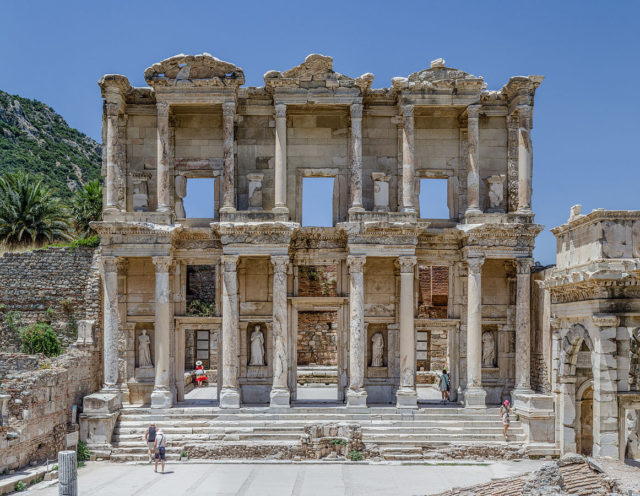
A century and a half later, most probably in 262 AD, the ancient city of Ephesus was devastated by a hazardous earthquake that shook Anatolia.
The epicenter was likely located in the southern realms of the Aegean Sea and historical accounts of those days indicated that many cities were also flooded by the sea, presumably by a tsunami.
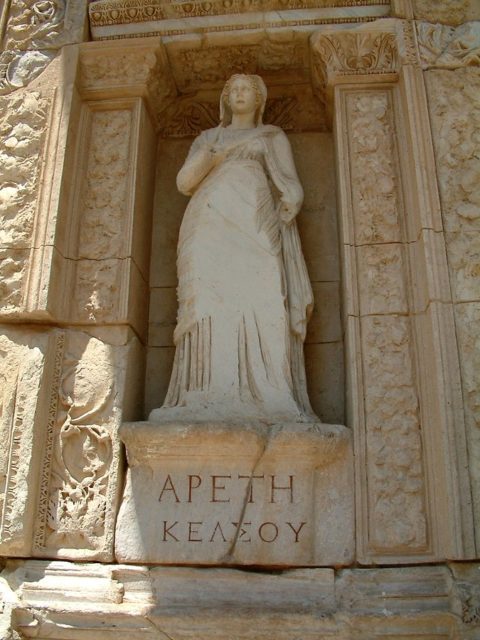
Much of the Library of Celsus at Ephesus, including all scrolls, was destroyed by fire around 262. The cause of the fire is attributed either to the hazardous earthquake or to the Goths invasion that had happened in 267 or 268.
Aside from the library, Ephesus’ Temple of Artemis, which counts as one of the Seven Wonders of the Ancient World, was also demolished around the same date, either by the earthquake or again, by the slightly later Gothic invasion. For centuries, the library has been laying in ruins, until its facade was re-erected by archaeologists during the 1970’s.
4.The Royal Library of the Ribeira Palace, Lisbon
The Ribeira Palace used to be the main residence of the Portuguese royal family for about 250 years. Situated in Lisbon, its construction was ordered by King Manuel I of Portugal and the palace complex was noted for undergoing numerous reconstructions, ending in a final Mannerist and Baroque form.
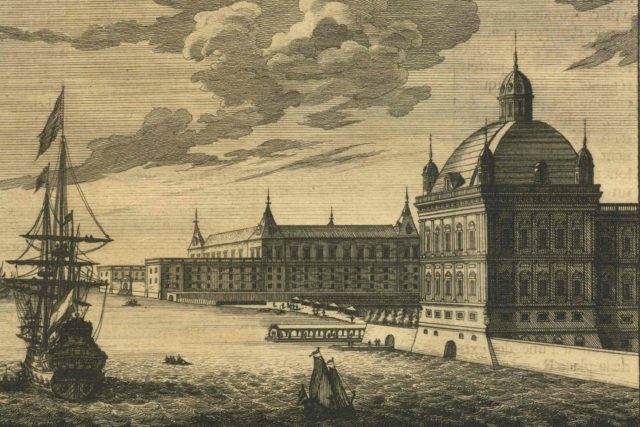
The complex was wiped out from the face of the earth following the huge Lisbon earthquake in 1755 that also caused tsunami and fire nearly destroying most of the city. The Palace of Ribeira integrated a royal library in its facilities. It housed around 70,000 volumes and hundreds of works of art; all were lost in the catastrophe. The royal archives had detailed historical records of the explorations of Vasco da Gama and other early navigators. After the earthquake, the reigning monarch, King José I suffered from claustrophobia and opted to live the rest of his life in the pavilions in the hills of Ajuda, so, therefore, the wondrous palace was never rebuilt.
5.The House of Wisdom in Baghdad
The House of Wisdom was a major intellectual hub during the Islamic Golden Age, but it was sadly destroyed in 1258 when Mongols invaded Baghdad.
Founded by Caliph Harun al-Rashid, who reigned from 786 to 809, the House of Wisdom was more than just a library. Under the reign of the Caliph’s son, the learning center attracted a plethora of well-known scholars to share knowledge, ideas, and culture in the House of Wisdom. Based in Baghdad, from the 9-th century until the 13-th century, the House of Wisdom had enough room for Muslim, Jewish, and Christian scholars altogether.
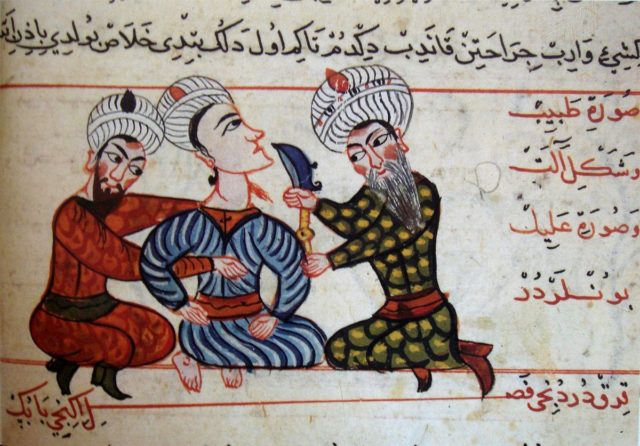
The center was translating books in Arabic and preserved them. Scholars associated with it were also noted for some outstanding and original contributions in different kind of fields such us mathematics, astronomy, zoology, alchemy and chemistry, medicine, geography, and cartography.
The House of Wisdom, by the middle of the ninth century, was considered to have the largest selection of books in the world. Unfortunately, the beginning of 1257 AD was marked by the siege of the Mongols who on February 13th that year, entered Baghdad and started off a week full of pillage and destruction. All libraries in the city including the House of Wisdom were destroyed by the army of Hulagu Khan. Reportedly, books were thrown into the Tigris River in such quantities that the river ran black from the ink of the books.
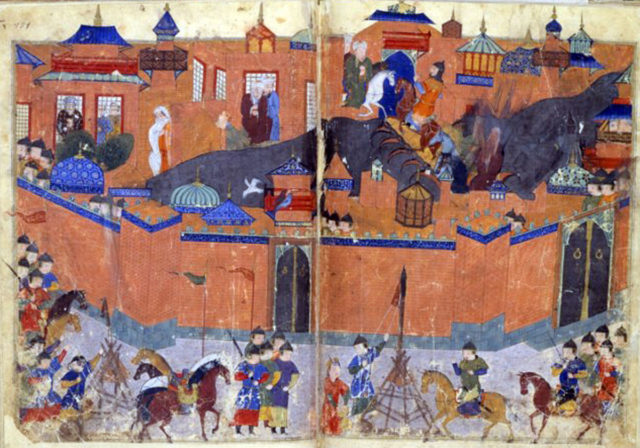
Although the Persian polymath Nasir al-Din al-Tusi had rescued about 400,000 manuscripts, which he took to Maragheh observatory before the siege, the Mongol siege of Baghdad still counted as the major reason why the prosperity of Arab science was mostly declined by the second half of the 13-th century.
6. Institut für Sexualwissenschaft, Berlin
Last but not least, the Institut für Sexualwissenschaft was an early private sexology research institute in Germany that was opened in 1919 and sadly in 1933, it became an early target of the Nazis who gained control over the building and its libraries, and burnt its books and documents.
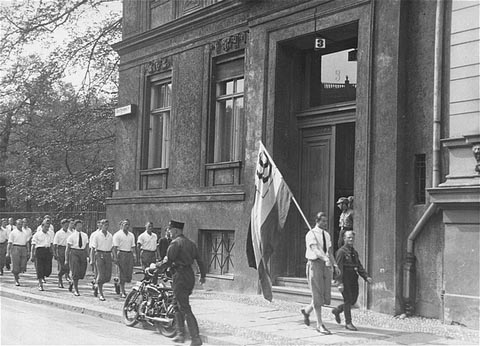
Founded by the German Jewish physician and sexologist Magnus Hirschfeld, the Institute functioned as a non-profit foundation and was situated in Berlin’s Tiergarten.
Hirshfeld also ran the Scientific-Humanitarian Committee which for years had been campaigning for gay rights and tolerance in an environment that was largely conservative. As a researcher, Magnus collected questionnaires from approximately 10,000 people, published a book entitled “The Homosexuality of Man and Woman” in 1914, and collected a unique library on same-sex relationships. He closely collaborated with Arthur Kronfeld, renowned German-Jewish psychiatrist of those days, and eventually a professor at the University of Berlin.
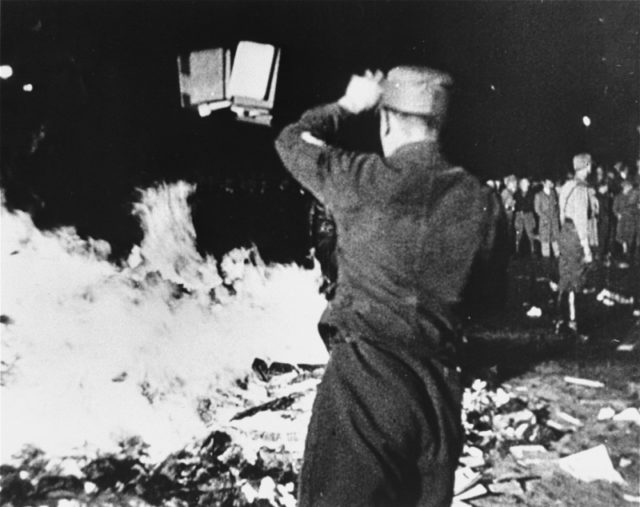
Aside from being a research library, the Institute also housed a huge archive. Its facilities had medical, psychological, and ethnological divisions, and marriage and sex counseling office too. It is estimated that around 20,000 people visited the place annually and that consultation services were given to around 1,800 persons.

Those who could not afford to pay were treated for free. The Institute was a world renowned site that lobbied for rights and tolerance to homosexual and transgender people in times when hardly anyone thought of doing so.
However, when the Nazis went on to conduct the book burning at Bebelplatz on May 10th, 1933, they started with Jewish authors, as well as the library of the Institute. In their terms, these books were “un-German.” The institute was firstly attacked by the Deutsche Studentenshaft on 6th May 1933, and four days later, its archives were publicly hauled out and burned on Bebelplatz.
